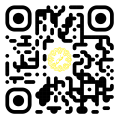Manāhij Al-Buḥūṡ Al-‘Ilmiyyah fī Qismi Ta’līm Al-Lugah Al-‘Arabiyyah li Al-Marḥalah Al-Jāmi’iyyah bi Jāmi’ah Sunan Kalijaga Yogyakarta wa Jāmi’ah ‘Ulūm Al-Qur’an bi Wonosobo wa Jāmi’ah Semarang Al-Ḥukūmiyyah wa Jāmi’ah Muḥammadiyyah bi Yogyakarta
DOI:
https://doi.org/10.28918/alsinatuna.v9i1.1887Keywords:
Research Methods, Concept Map and Arabic Language Education.Abstract
This study aims to describe and create a concept map the research methods of Arabic Language Education undergraduate programs at UIN Sunan Kalijaga, UNSIQ Wonosobo, UNNES and UMY. This research is descriptive qualitative and quantitative. Data collection using documentation techniques. Data were analyzed inductively with content analysis method. The qualitative data analysis technique uses an interactive analysis model, namely data reduction, data submission and conclusion drawing. Meanwhile, quantitative data analysis uses a frequency distribution. The validity of the findings was tested by using the triangulation technique of data sources. The results of the study show there are three research methods, namely experimental methods (38.3%), comparative methods (6.1%) and descriptive methods (55.6%). Descriptive method consists of case study method (17.8%), literature review method (15%), development method (12.2%), correlation method (7.8%), and activity analysis method (2.8%) and the map of research methods can be described globally or in detail with a focus on descriptive, experimental and comparative methods. The theoretical findings of this study indicate that the use of various methods in scientific research in Arabic language education that is adapted to research needs will have an effect on improving the quality of knowledge in Arabic language education.
Downloads
Published
How to Cite
Issue
Section
License
Copyright (c) 2023 Alsinatuna

This work is licensed under a Creative Commons Attribution 4.0 International License.


















